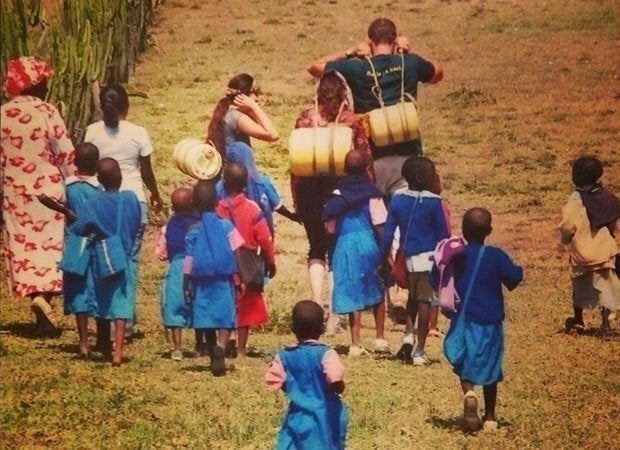This is a sponsored feature. All opinions are 100% from Her Campus.
Around the world, girls face barriers that limit their access to education. Sixty-six million girls around the world who should be in school today are not, and 33 million fewer girls are in school than boys.
How education changes lives
When girls go to school and stay there longer, it influences not only their lives, but their communities and their economies as well. It also affects their children’s futures: a child born to a literate mother is 50 percent more likely to survive past the age of five, and educated mothers are more than twice as likely to send their children to school. Although education affects a girl’s future income—a girl with an extra year of education can earn 20 percent more as an adult–it can also affect her family life: girls with eight years of education are four times less likely to be married as children. Most importantly, an educated girl gains the skills and self-confidence to better stand up for her rights.
Why girls don’t have access to education
Several barriers keep girls from obtaining the education they need and deserve. Economic barriers, like extreme poverty, either leave girls unable to afford schooling or mean they are kept at home to work and help support the family. Distance from schools, or safety concerns for them to walk there, can prevent girls from attending.
Lack of access to clean water can mean girls spend their days fetching water, which is sometimes miles away, rather than getting an education. A lack of clean water can also lead to illness that keeps girls home, and the lack of bathroom facilities and feminine hygiene products at schools can make it too uncomfortable for girls, causing many to drop out rather than continue to pursue their education in secondary school.
Early and forced marriages, human trafficking and domestic slavery all prevent girls from being able to pursue their own dreams. Even social traditions and religious and cultural beliefs regarding the role of women and their need for education can stand as roadblocks between women and their desire to learn.

The good news is, many organizations, communities and governments around the world are actively working to address these barriers and get more girls in school (and keep them in school longer!). From giving girls in India a bike to get to school to creating girls’ empowerment programs in Ecuador to providing community women with opportunities for alternative income that can be used to pay for their girls’ education, every step can make a big difference.
How you can help
Back in July, Intel launched a new social action initiative called Intel for Change. The initiative chose three college students from more than 500 applications to travel to India, Kenya or Ecuador to understand the barriers girls face to their education and what is being done to eliminate those barriers. Now in the “action” phase of their program, the Student Ambassadors are each putting together programs on their campuses to help drive this change. Follow their journeys and experiences through their blogs and videos to learn more about how collegiettes like you can take action to help.
If you want to help spread awareness of the barriers to girls’ education, you can organize a screening of the film Girl Rising on your campus for International Day of the Girl this October. Girl Rising tells the story of nine different girls from nine countries and how education could change their lives. Go here to sign up.
To learn more about Intel for Change, join the Intel for Change Community!
